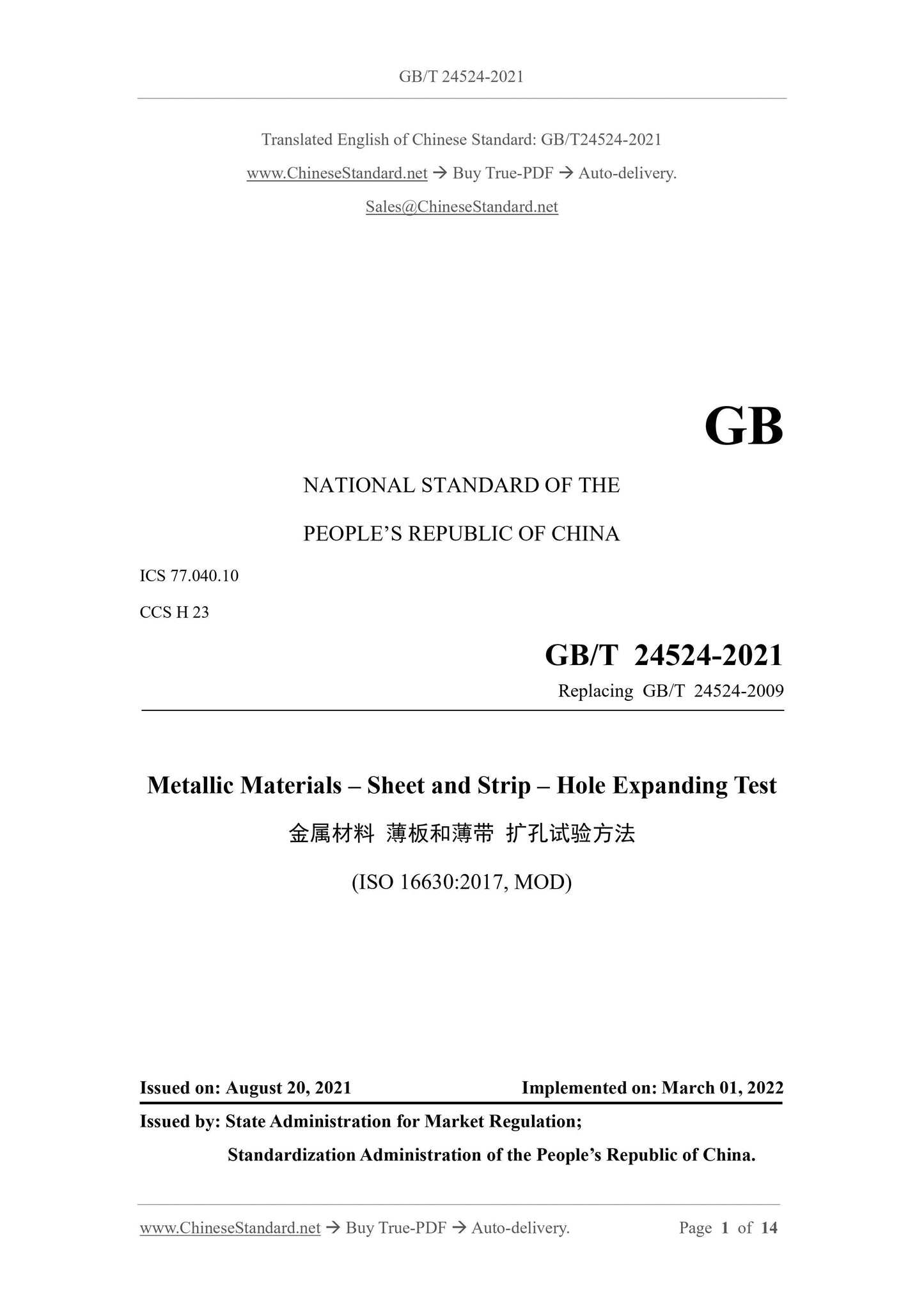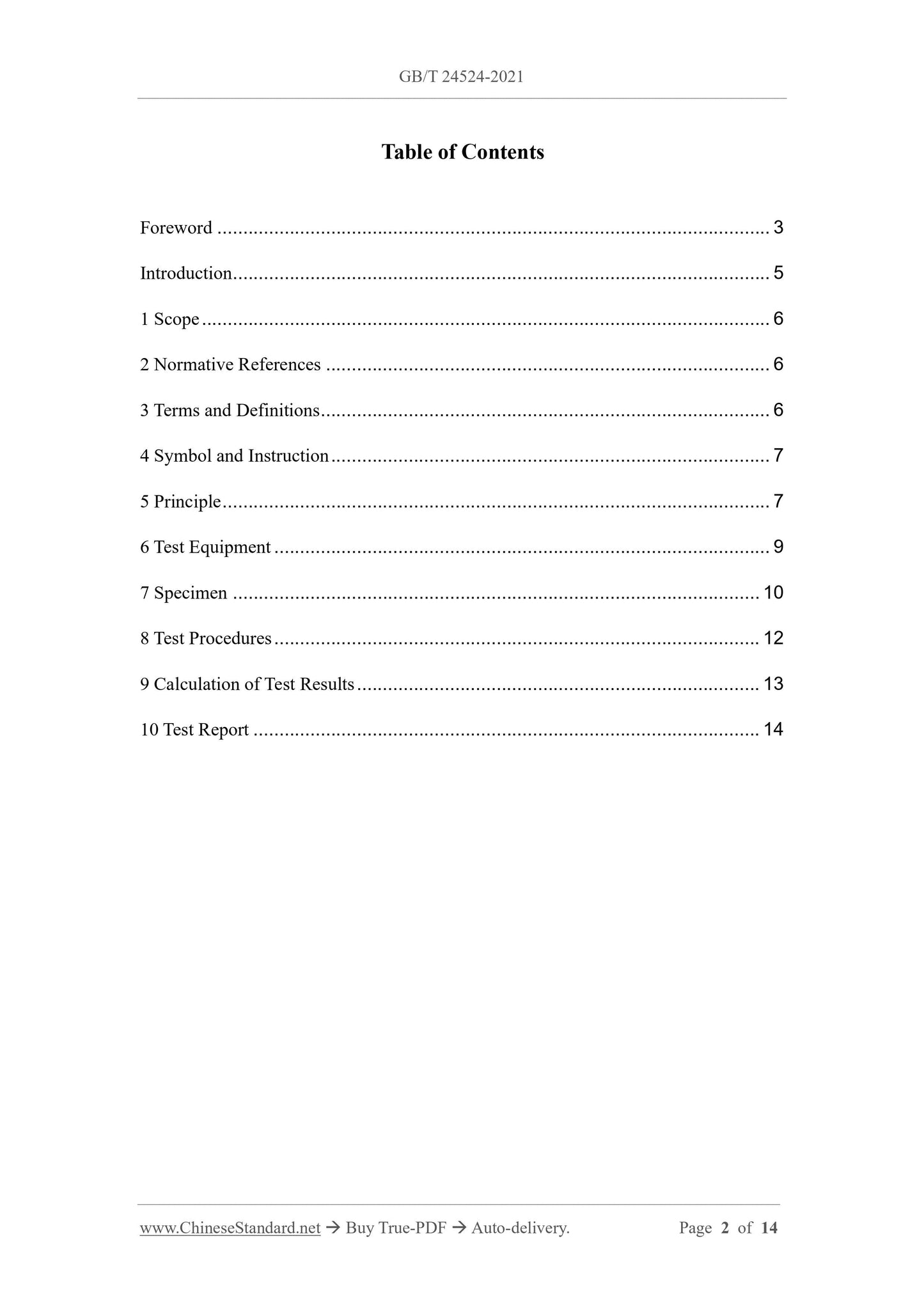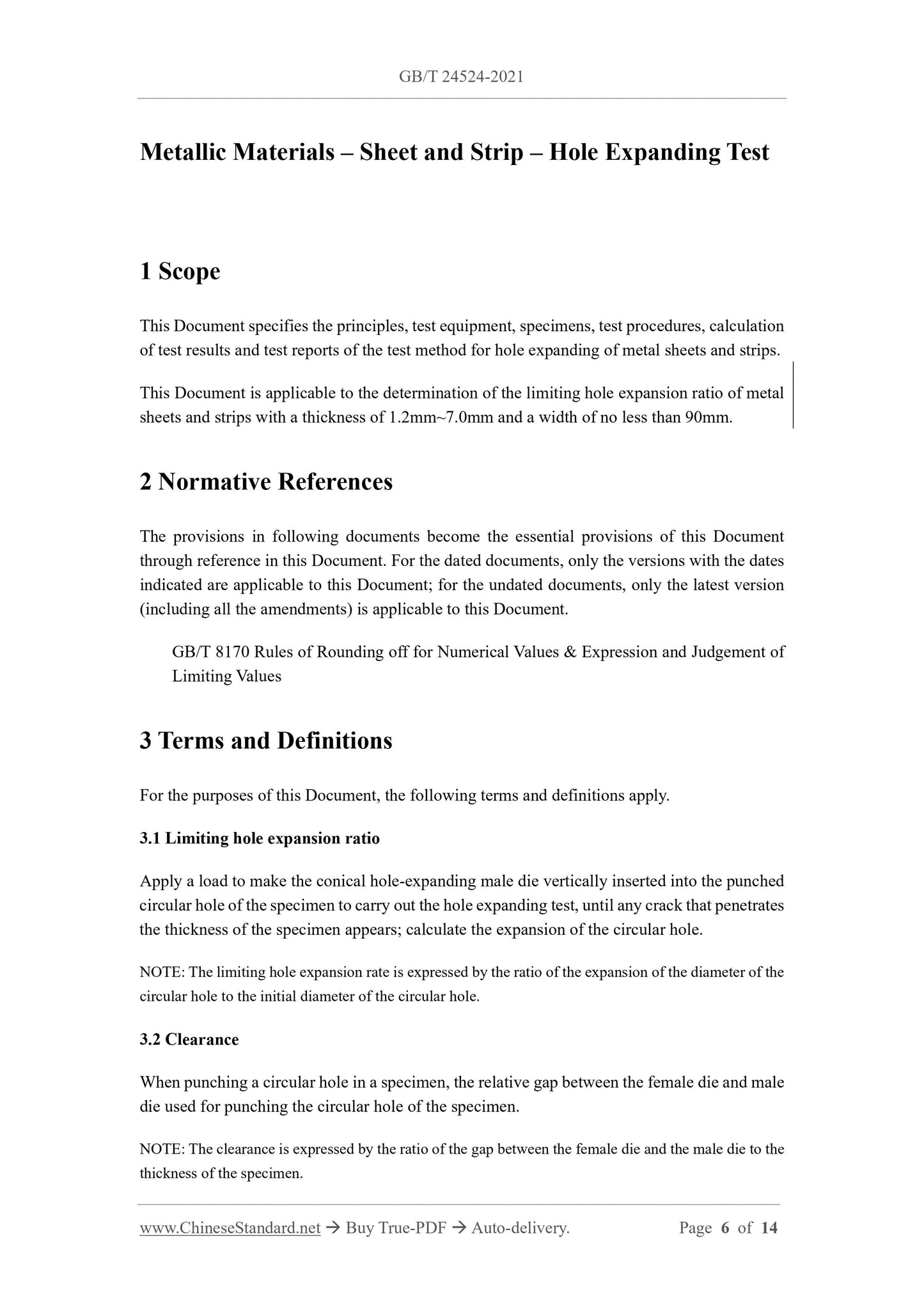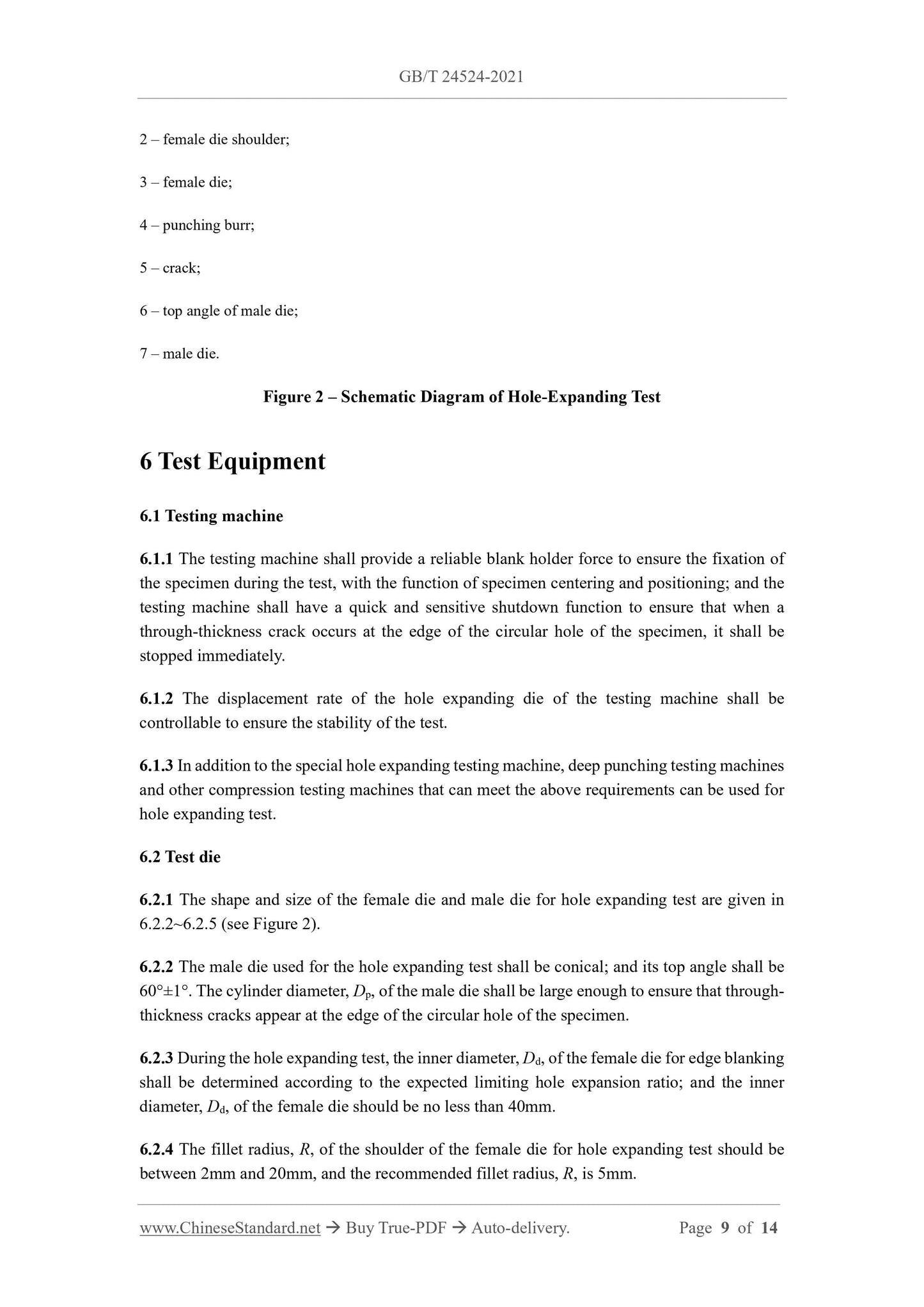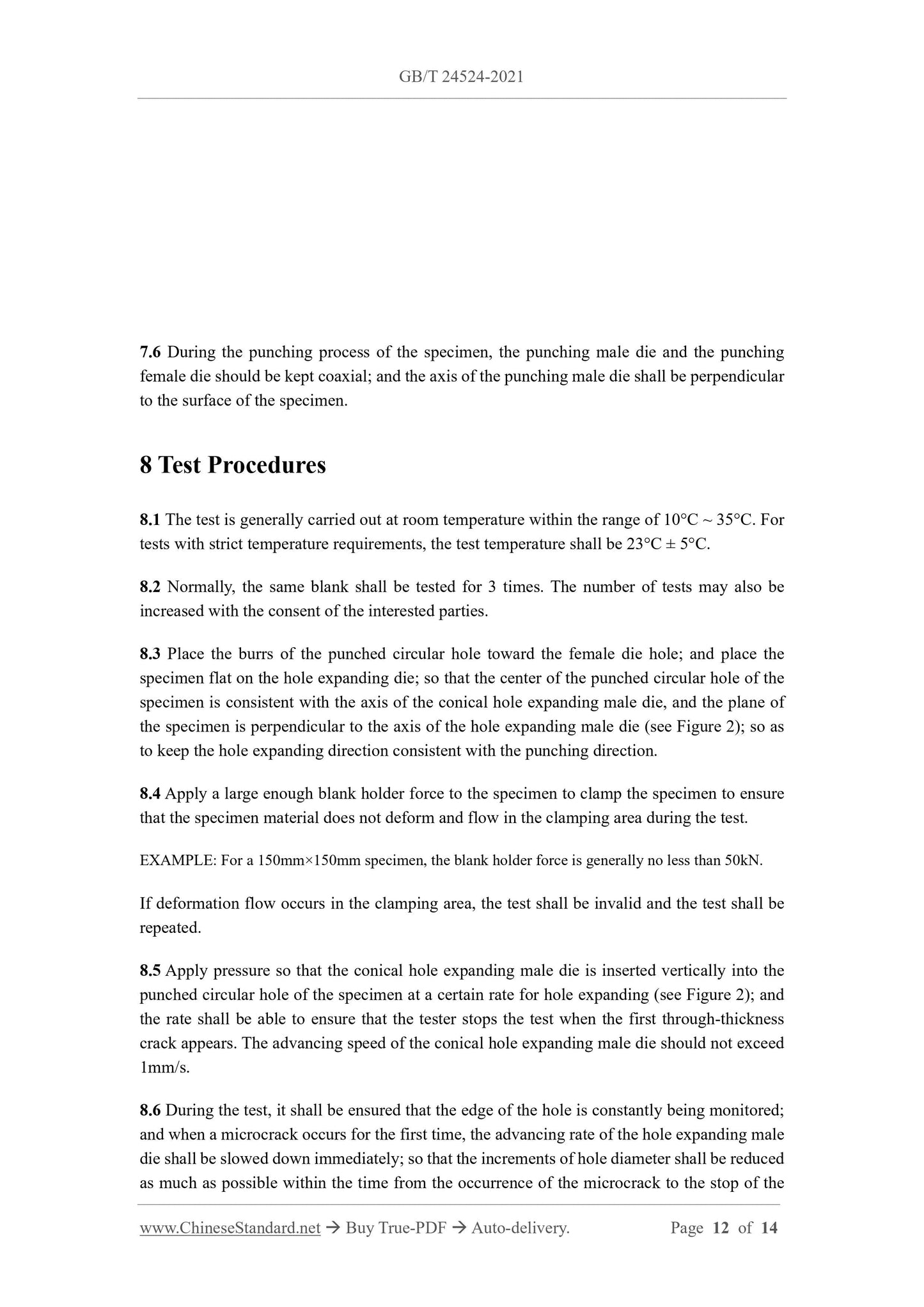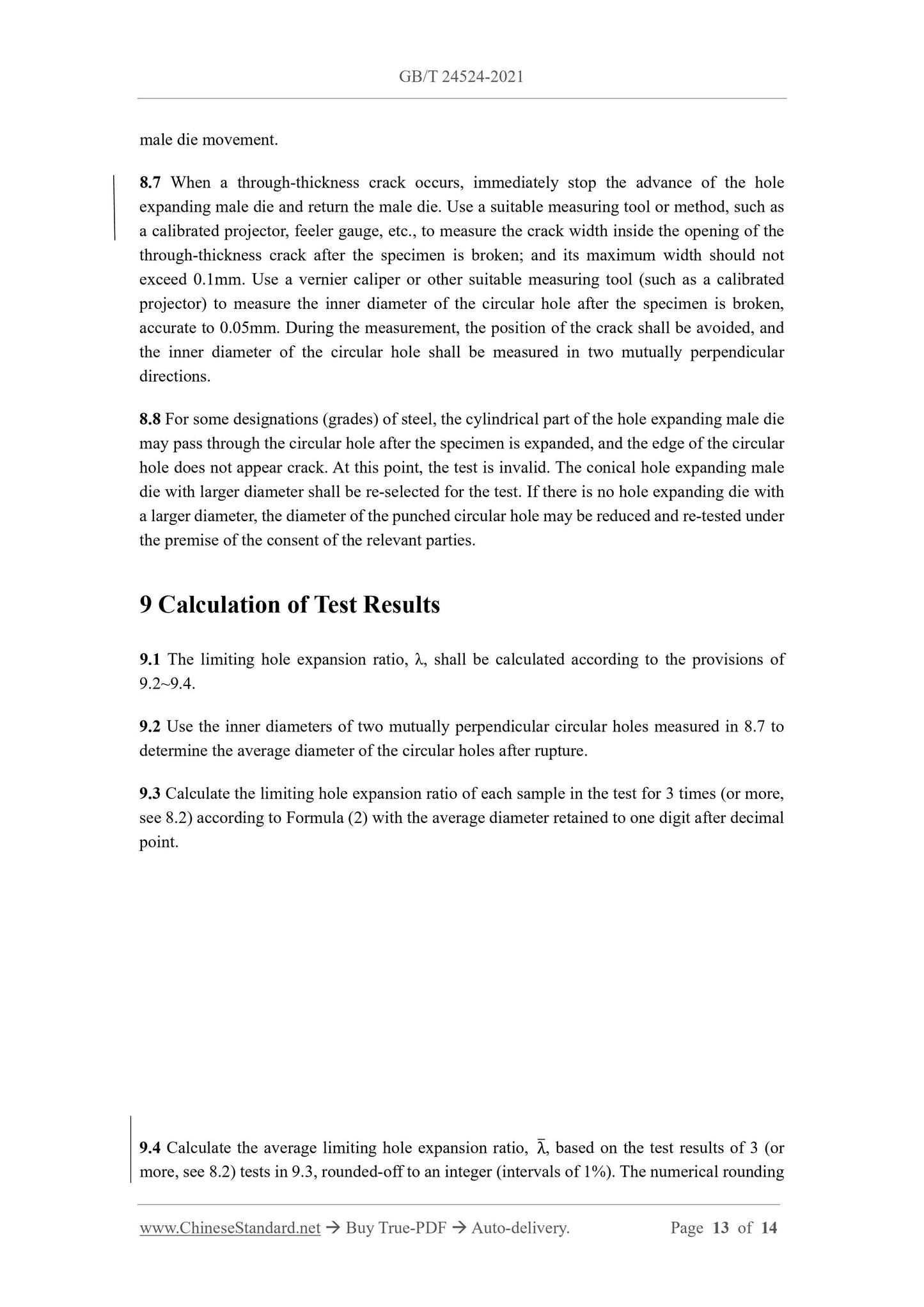1
/
of
6
www.ChineseStandard.us -- Field Test Asia Pte. Ltd.
GB/T 24524-2021 English PDF (GB/T24524-2021)
GB/T 24524-2021 English PDF (GB/T24524-2021)
Regular price
$230.00
Regular price
Sale price
$230.00
Unit price
/
per
Shipping calculated at checkout.
Couldn't load pickup availability
GB/T 24524-2021: Metallic materials - Sheet and strip - Hole expanding test
Delivery: 9 seconds. Download (and Email) true-PDF + Invoice.Get Quotation: Click GB/T 24524-2021 (Self-service in 1-minute)
Newer / historical versions: GB/T 24524-2021
Preview True-PDF
Scope
This Document specifies the principles, test equipment, specimens, test procedures, calculationof test results and test reports of the test method for hole expanding of metal sheets and strips.
This Document is applicable to the determination of the limiting hole expansion ratio of metal
sheets and strips with a thickness of 1.2mm~7.0mm and a width of no less than 90mm.
Basic Data
| Standard ID | GB/T 24524-2021 (GB/T24524-2021) |
| Description (Translated English) | Metallic materials - Sheet and strip - Hole expanding test |
| Sector / Industry | National Standard (Recommended) |
| Classification of Chinese Standard | H23 |
| Word Count Estimation | 14,118 |
| Issuing agency(ies) | State Administration for Market Regulation, China National Standardization Administration |
Share
